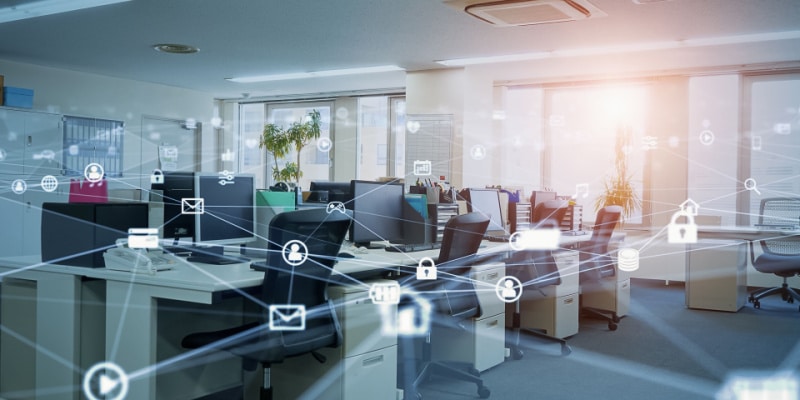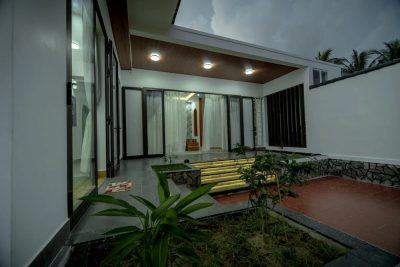
Offices have undergone a massive transformation as technology continues to evolve at a rapid pace. Today, Smart Spaces are becoming the new standard—reshaping how people interact, collaborate, and perform. These intelligent environments enhance productivity and support employee well-being and creativity. Exploring smart spaces and their impact on office efficiency offers a glimpse into the future of work and innovation.
The Rise of Smart Spaces
Smart spaces are environments enhanced with connected technologies that elevate functionality and user experience. By integrating the Internet of Things (IoT), artificial intelligence (AI), and data analytics, smart spaces adapt to the needs of their users and improve operational performance. These environments enable seamless communication, real-time collaboration, and data-driven decision-making—all of which are vital for driving business productivity.
Boosting Communication and Collaboration
Smart spaces foster improved communication and teamwork. Intelligent meeting rooms equipped with advanced video conferencing tools allow in-office and remote teams to connect effortlessly. Digital whiteboards, real-time document sharing, and collaborative platforms facilitate dynamic brainstorming sessions, promoting the flow of ideas regardless of geographic location. This technology bridges distance and fosters a more unified, inclusive workspace. Furthermore, team members can collaborate across different time zones, ensuring that the work doesn’t stop just because the office clock says it’s time to go home.
Automating for Enhanced Productivity
At the core of every smart space is automation. By reducing manual intervention and human error, routine tasks are optimized or eliminated altogether. Automated lighting and climate control adjust based on occupancy and user preferences, creating a personalized work environment without disruption. Smart scheduling tools ensure efficient use of meeting rooms and resources. This shift allows employees to focus on strategic and value-driven work instead of operational minutiae. Additionally, automation reduces wasted time and effort, enabling teams to spend more of their time on impactful projects.
Prioritizing Employee Wellness
Smart spaces also support employee well-being—both physical and mental. Ergonomic, adjustable workstations help reduce the risk of injury and promote comfort throughout the day. Meanwhile, air quality monitors and noise-canceling systems create healthier, quieter environments that support focus and reduce stress. When employees feel supported by their space, they’re more engaged, motivated, and productive. Moreover, features like natural light integration and biophilic design elements help promote mental health, offering a balance of nature and technology for a more holistic work environment.
Data-Driven Decision-Making
Smart spaces generate rich datasets that organizations can leverage to improve decision-making. With sensors and analytics tools, businesses can track space usage, employee movement patterns, and energy consumption. These insights help optimize office layouts, reduce unnecessary costs, and ensure environments remain conducive to productivity. Predictive maintenance powered by real-time data also helps prevent disruptions and keep operations running smoothly. This data can be used to fine-tune the workplace to meet both employee needs and organizational goals, ensuring every aspect of the office is working efficiently.
Fostering Innovation and Creativity
Creativity thrives in flexible, supportive environments. Smart spaces encourage innovation by offering adaptable work zones, such as modular furniture and reconfigurable layouts tailored to various tasks. This flexibility inspires employees to approach challenges from new perspectives. With access to cutting-edge tools and collaborative resources, smart spaces cultivate a culture of experimentation, unlocking fresh ideas and continuous improvement. When teams feel empowered to modify their surroundings to suit their needs, they’re more likely to take risks, explore new concepts, and bring innovative solutions to life.
Sustainability and Energy Efficiency
As sustainability becomes a growing priority, smart spaces play a pivotal role in promoting energy conservation. Smart systems monitor usage patterns and adjust lighting, HVAC, and other utilities based on occupancy, reducing energy waste. These eco-friendly features not only align with environmental goals but also lower operational costs. Organizations that embrace sustainable practices resonate better with eco-conscious clients and consumers. In addition, the focus on energy-efficient systems can lead to long-term savings, making the investment in smart space technology not only good for the environment but also for the bottom line.
Conclusion
Smart spaces are ushering in a new era of office productivity and efficiency. As organizations pursue digital transformation, these intelligent work environments offer clear advantages—from enhanced collaboration and automation to employee wellness and sustainability. By investing in smart spaces, forward-thinking companies position themselves at the forefront of innovation, ready to adapt to the changing demands of the modern workplace. The future belongs to agile, tech-empowered environments where creativity, collaboration, and success flourish. As technology continues to advance, smart spaces will remain essential to creating workplaces that meet the ever-evolving needs of employees and businesses alike.








